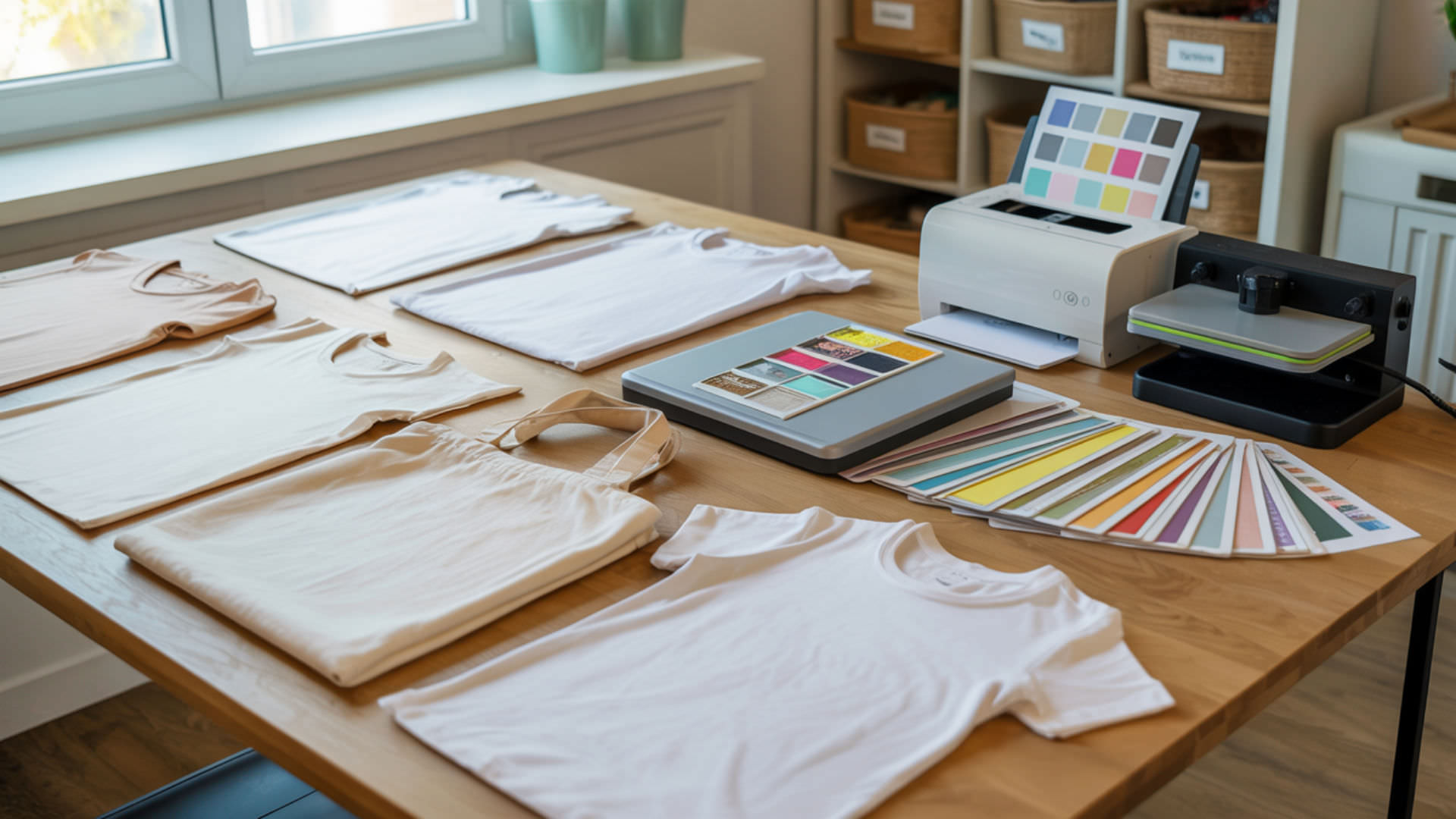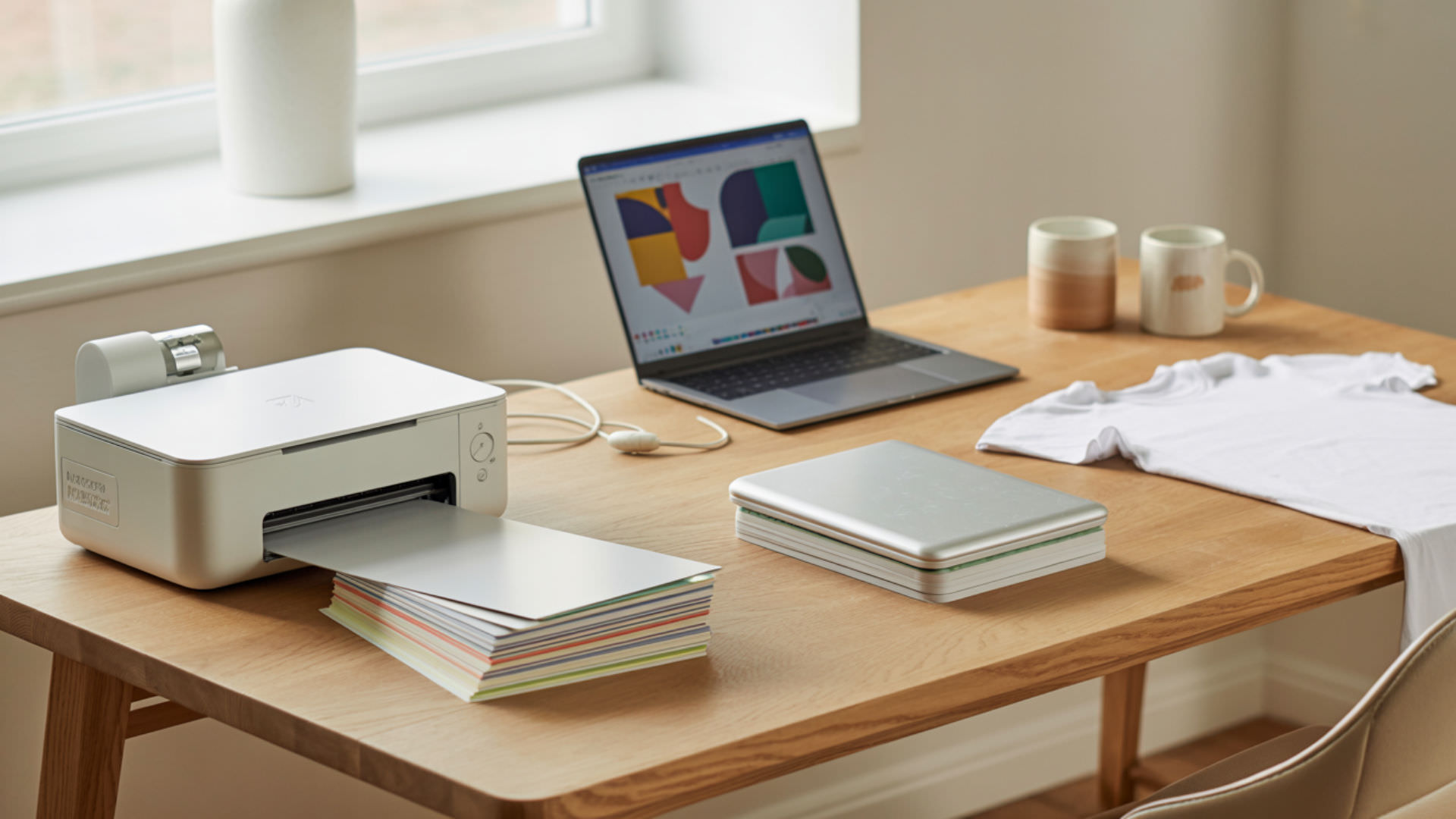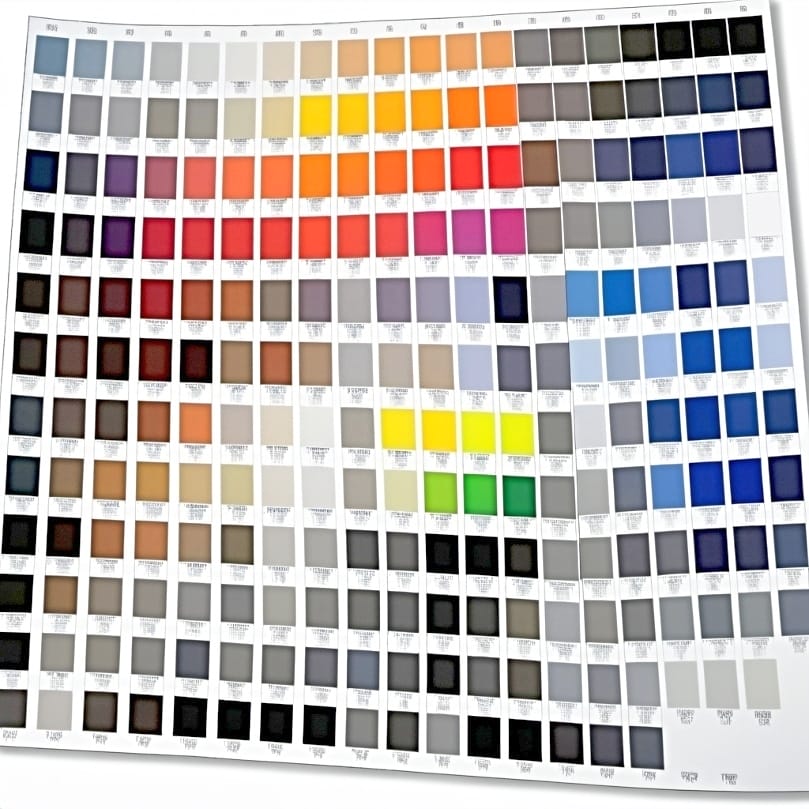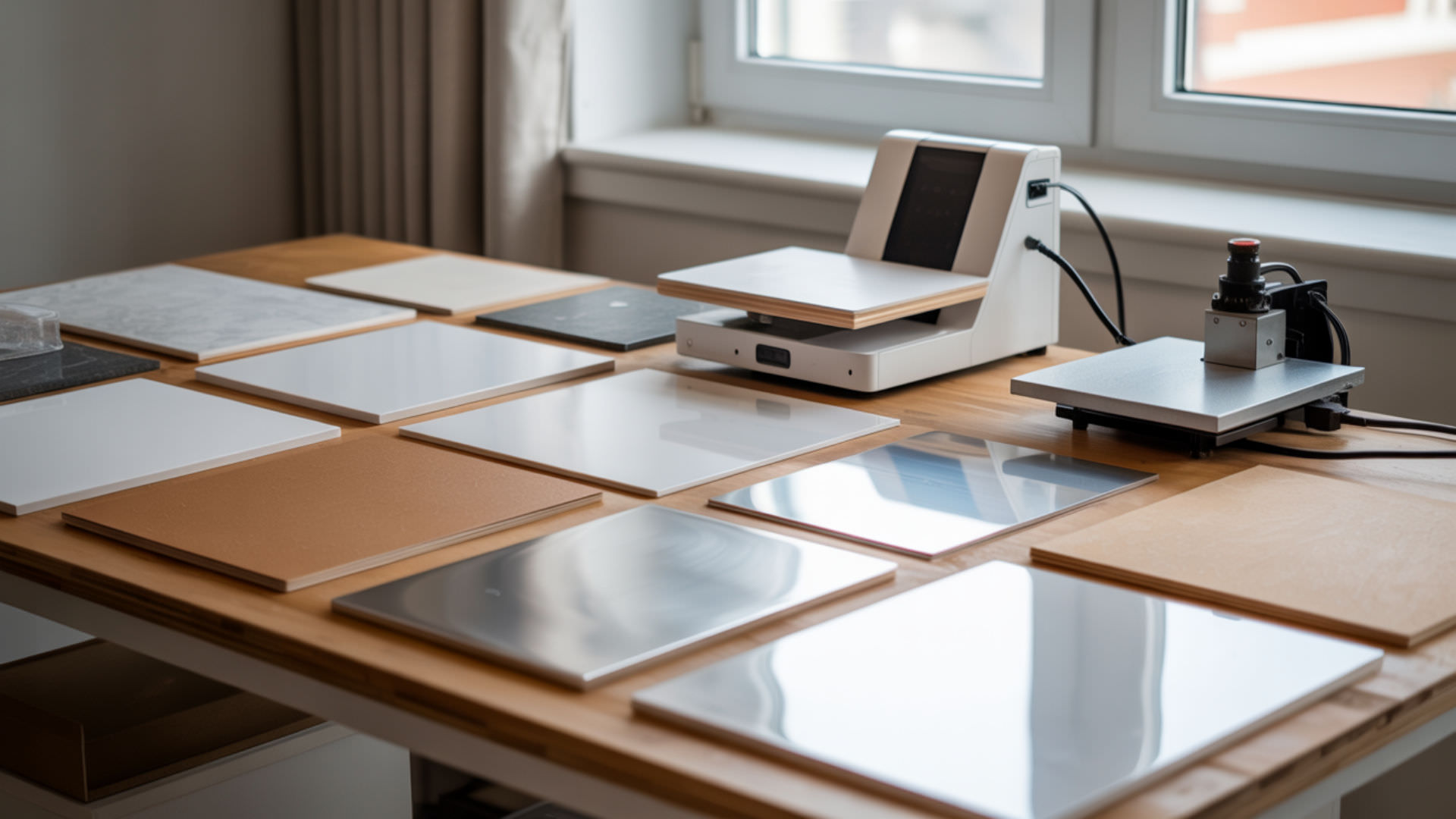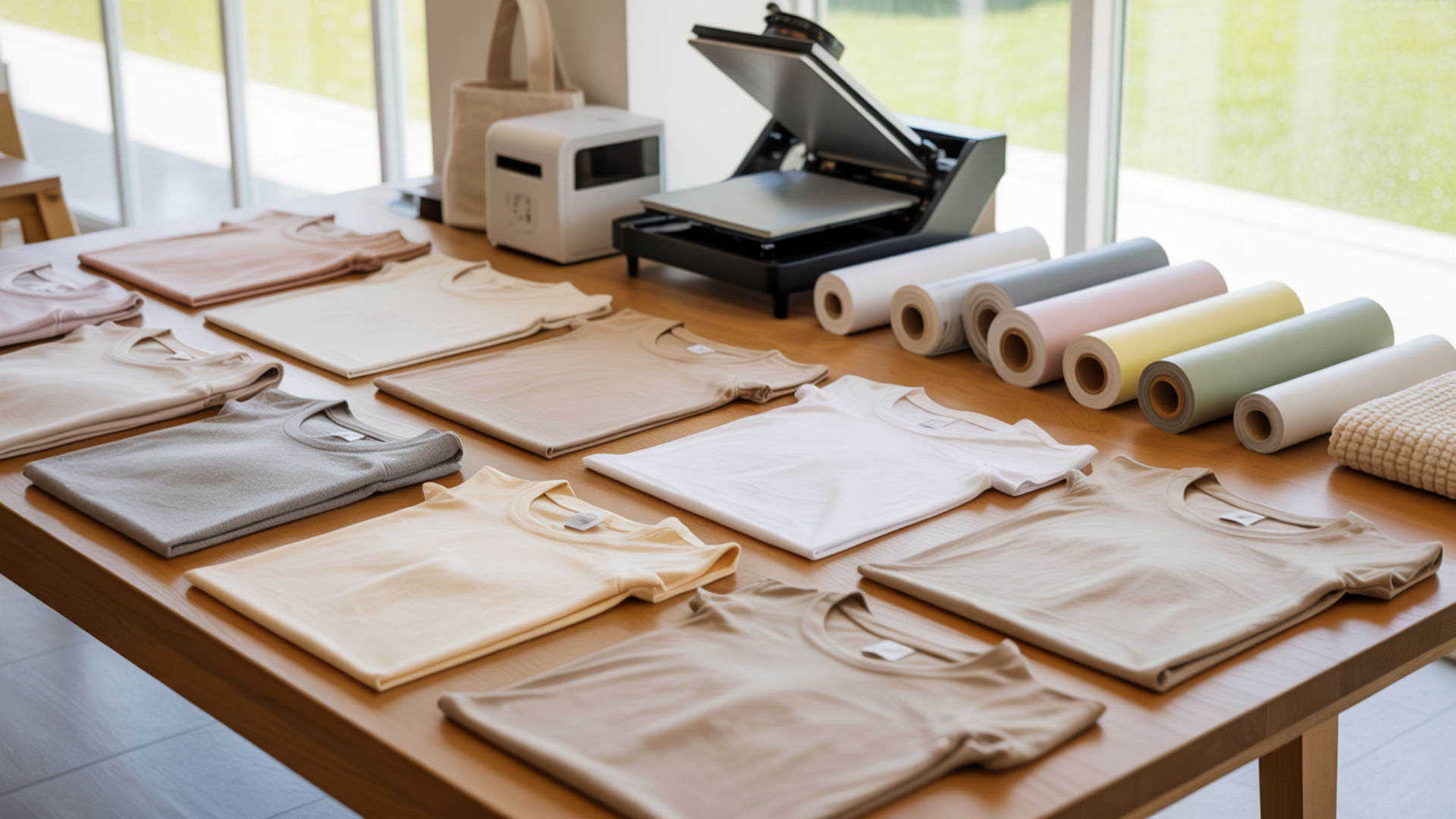Table of Contents
ToggleSublimation and DTF (direct-to-film) printing use fundamentally different chemistry and transfer workflows to decorate garments. Sublimation relies on a phase change process that converts solid dye to gas, bonding color within polyester fibers permanently. DTF prints pigment ink onto PET film, applies hot melt adhesive powder, and transfers the finished design onto virtually any fabric type through heat pressing. Our complete guide on sublimation vs other printing methods compares both technologies alongside screen printing—a mesh stencil method that differs from both digital approaches.
Key Takeaways
- Sublimation’s dye diffusion bonds color permanently within polyester fibers; DTF uses hot melt adhesive powder to attach pigment ink onto any fabric surface.
- Sublimation produces zero texture and unlimited wash durability on polyester; DTF creates a thin film layer that withstands 50–100+ washes on cotton, blends, and synthetics.
- Sublimation requires polyester content of 65%+ for acceptable results; DTF works on virtually any fabric including 100% cotton without substrate limitations.
What exactly is the difference between sublimation and DTF printing?

Sublimation uses dye diffusion during a phase change—solid ink converts to gas at 380–400°F and bonds within polyester’s molecular structure permanently. DTF prints pigment ink onto PET film, dusts the wet ink with adhesive powder, cures it, then heat-presses the transfer onto fabric where adhesive creates the bond. Sublimation is a direct solid-to-gas transition with no liquid stage, which is the same type of phase change described by the U.S. Geological Survey. [1]
What is the difference between sublime and DTF?
Sublimation infuses dye into fabric through dye diffusion—the color becomes part of the polyester fiber structure with zero surface texture. DTF deposits pigment ink onto a transfer film that adheres to fabric surfaces using heat-activated adhesive. Sublimation prints feel like unprinted fabric; DTF transfers have a slight film texture similar to heat transfer vinyl but thinner and more flexible.
Is DTF dye sublimation?
DTF is not dye sublimation—the two methods use completely different bonding mechanisms. Sublimation requires a phase change from solid to gas that only works on polyester substrates. DTF uses hot melt adhesive powder that melts during heat pressing to physically attach pigment ink to any fabric surface. The chemistry, equipment, and compatible materials differ entirely between these technologies.
Which printing method is actually cheaper for your business?
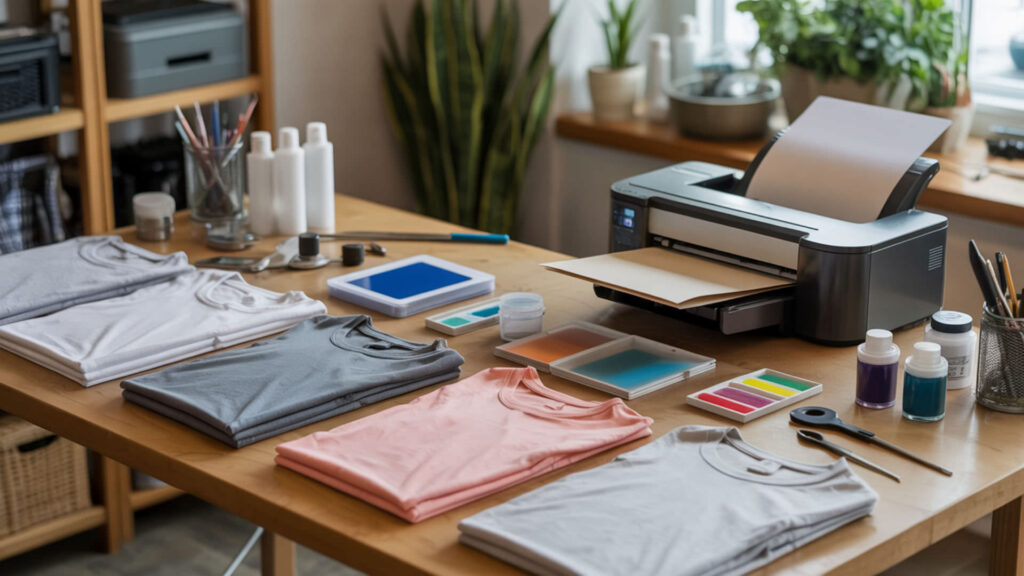
Workflow differences significantly impact costs between these methods. Sublimation requires only paper, ink, and pressing—simple and direct. DTF’s printing on film indirect workflow adds PET film and adhesive powder costs but eliminates polyester restrictions. DTF equipment costs $2,000–$8,000 for entry-level systems; sublimation starts at $500–$1,500. For detailed equipment comparisons and startup investment guidance, see our guide on the best printer for T-shirt printing.
How much does sublimation print cost?
Sublimation printing costs $0.50–$2.00 per transfer depending on design size and ink coverage. The process requires only heat, pressure, and time—typically 35–60 seconds at 380–400°F with medium pressure. Consumables include sublimation paper ($0.10–$0.30 per sheet) and ink ($0.20–$0.50 per print). Total per-garment decoration cost runs $1–$3 before blank garment expense.
⫸ Click Here For Best Selling Sublimation Printers And Products ⫷How much does it cost to print your own DTF transfers?
DTF transfer costs run $1–$4 per print depending on size and complexity. Consumables include PET film ($0.15–$0.50 per sheet), pigment ink ($0.30–$0.80 per print), and hot melt adhesive powder ($0.10–$0.20 per application). The multi-step workflow increases material costs compared to sublimation, but fabric versatility often justifies the difference for businesses serving diverse customer needs.
Can you use the same printer for both sublimation and DTF?

You cannot use the same printer for both methods without complete conversion. Sublimation requires specialized dye inks and sublimation transfer paper; DTF uses pigment ink and printing on film through an indirect workflow. Mixing ink types contaminates printheads permanently. Some modified Epson printers serve one purpose or the other, but dedicated equipment for each method prevents cross-contamination issues. Our comparison of inkjet vs dye-sublimation printing explains how printer architecture differs across technologies.
Can you use sublimation ink for DTF?
Sublimation ink cannot work for DTF printing because the inks serve entirely different purposes. Sublimation dye requires a phase change triggered by high heat to bond with polyester molecules. DTF requires pigment ink that sits on PET film and transfers via adhesive. Using sublimation ink in a DTF workflow produces no usable transfer because the dye passes through the film without bonding.
Are DTF and sublimation ink the same thing?
DTF and sublimation inks are chemically different products designed for incompatible processes. Sublimation uses dye-based ink that enables dye diffusion into polyester fibers when heated. DTF uses pigment ink with larger color particles that sit on surfaces rather than penetrating them. The adhesive powder in DTF bonds pigment to fabric; sublimation bonds dye molecules directly to polymer chains.
Which method lasts longer on different materials?

Durability differences depend entirely on fabric compatibility and proper application technique. Sublimation on polyester lasts the garment’s lifetime—dye becomes part of the fiber structure. DTF on cotton, polyester, or blends withstands 50–100+ washes when properly cured.
How many washes does a DTF print last?
Properly applied DTF prints last 50–100+ washes when the hot melt adhesive powder fully cures during pressing at 300–325°F for 10–15 seconds. Durability differences emerge based on washing habits—cold water, inside-out washing, and low-heat drying extend print life significantly. DTF’s adhesive bond strengthens with the initial wash cycle as residual powder fully integrates with fabric fibers. DTF durability depends on applying and transferring heat consistently during curing and pressing, since heat energy must move effectively through materials to activate bonding and form a stable layer, as explained in NOAA’s overview of heat transfer. [2]
Does DTF peel or crack?
DTF transfers can peel or crack if improperly applied, but quality transfers resist both issues for 50–100+ washes. Durability differences depend on pressing temperature, time, and pressure accuracy. The pigment ink layer flexes with fabric movement when adhesive cures completely. Under-pressing causes peeling; over-pressing can make transfers stiff and crack-prone. Proper application creates durable, flexible prints.
What materials work best for DTF versus sublimation?
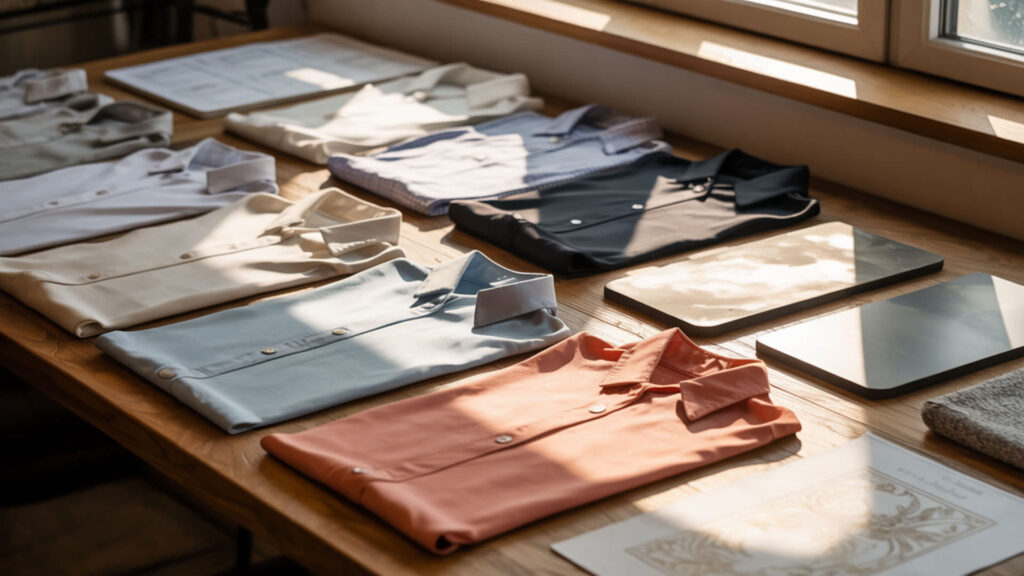
Sublimation requires polyester content of 65%+ or items with polymer coating—the dye diffusion process only works on synthetic substrates.DTF’s fabric compatibility extends to virtually any material including 100% cotton, cotton blends, polyester, nylon, and even leather.
Can you use DTF transfers on sublimation shirts?
DTF transfers work perfectly on polyester sublimation shirts because the hot melt adhesive powder bonds to any fabric surface regardless of fiber content. This allows combining sublimation’s all-over printing capabilities with DTF’s opacity for white or light-colored design elements on the same garment. Press DTF at 300–325°F to avoid damaging previously sublimated areas.
Can I use DTF on sublimation blanks?
DTF transfers adhere successfully to sublimation blanks including polymer-coated mugs, mousepads, and other hard substrates. The adhesive bonds to the polymer coating surface just as it bonds to fabric. Fabric compatibility extends the same principle—DTF’s adhesive-based transfer works on virtually any surface that can withstand 300–325°F pressing temperatures without damage.
Which printing method is better for starting a printing business?

Your ideal starting method depends on target market and fabric compatibility requirements. Sublimation offers simpler workflow differences with lower startup costs ($500–$1,500) but limits you to polyester products. DTF requires higher investment ($2,000–$8,000) but serves any fabric type. Businesses focusing on athletic wear or polyester promotional items benefit from sublimation; those serving diverse apparel needs prefer DTF flexibility.
Do you need a special printer for DTF transfers?
DTF requires either a dedicated DTF printer or a converted inkjet printer with white ink capability for printing on film through the indirect workflow. The printer must handle PET film feeding without jamming and support CMYK plus white ink channels. Entry-level converted Epson printers cost $1,500–$3,000; purpose-built DTF printers with powder shakers and curing run $3,000–$15,000+.
What machine do I need for sublimation?
Sublimation requires a sublimation printer ($300–$800 for converted Epson models), sublimation transfer paper, and a heat press capable of maintaining 380–400°F with consistent pressure. The heat, pressure, and time combination triggers dye conversion. Entry-level setups start under $1,000 total; professional systems with larger format printers and commercial presses run $3,000–$10,000+.
How do you print with DTF step-by-step?

- Print your design onto PET film using a DTF printer with white ink capability. The printer lays down white ink first as a base layer, then prints CMYK colors on top in reverse order.
- Apply hot melt adhesive powder evenly over the wet ink while the print is still tacky. Automatic powder shakers distribute adhesive uniformly; manual application requires gentle shaking and excess removal.
- Cure the powder-coated transfer using a curing oven or heat gun at 250–270°F until adhesive melts. Proper curing creates a smooth, glossy surface indicating the powder has fully integrated with the ink layer.
- Position the cured transfer face-down on the garment and secure placement. Unlike sublimation, DTF transfers don’t require taping because the film holds the design in place during pressing.
- Press the transfer using a heat press at 300–325°F for 10–15 seconds with medium-firm pressure. The heat press melts the adhesive powder, bonding the pigment ink layer permanently to the fabric surface.
- Peel the PET film away using hot peel or cold peel technique based on transfer type. Hot peel produces matte finishes; cold peel (after cooling 10–15 seconds) creates glossier results on most fabrics.
Ready to Choose Between Sublimation and DTF?
Your choice depends on product focus and customer base requirements. Sublimation delivers superior results on polyester with zero texture, unlimited durability, and lower operating costs—ideal for athletic wear, polyester promotional items, and sublimation blanks. DTF offers fabric versatility for cotton and mixed-fiber products with excellent durability at slightly higher per-print costs. Many businesses eventually operate both systems.
Frequently Asked Questions
Is DTF better than sublimation?
Neither method is universally better—durability differences depend on application. Sublimation produces permanent, crack-free prints on polyester that outlast the garment itself. DTF works on any fabric type with 50–100+ wash durability. Choose sublimation for polyester products requiring maximum longevity; choose DTF when fabric versatility matters more than absolute permanence.
Can you put DTF on a sublimation tumbler?
DTF transfers can adhere to sublimation tumblers with polymer coating if the surface is heat-resistant and properly prepared. However, sublimation typically produces better results on tumblers because dye integrates into the coating permanently. DTF adhesive may not bond as durably to hard substrates designed for sublimation dye penetration.
Is DTF vinyl or sublimation?
DTF is neither vinyl nor sublimation—it’s a distinct transfer method using pigment ink and hot melt adhesive powder on PET film. Unlike vinyl, DTF prints full-color designs without weeding. Unlike sublimation, DTF works on cotton and doesn’t require heat-activated dye conversion. The adhesive-bonded pigment ink creates a thin, flexible layer more similar to vinyl texture than sublimation’s zero-texture finish.
Do DTF prints go bad?
Cured DTF transfers stored properly remain usable for 6–12+ months before application. Durability differences after application depend on pressing quality and garment care. Applied DTF prints don’t degrade on fabric—they maintain color and adhesion for the garment’s useful life when properly cured and pressed. Avoid storing uncured transfers in humid conditions.
Can you iron on DTF transfers?
Household irons generally cannot apply DTF transfers successfully because they lack consistent temperature and pressure control. The hot melt adhesive powder requires 300–325°F with firm, even pressure for 10–15 seconds—conditions difficult to achieve with manual ironing. Heat presses provide the controlled environment needed for proper adhesive activation and durable bonding.
References
- Sublimation and the water cycle. (2019, June 8). USGS. https://www.usgs.gov/water-science-school/science/sublimation-and-water-cycle?utm_
- The transfer of heat energy. (n.d.). National Oceanic and Atmospheric Administration. https://www.noaa.gov/jetstream/atmosphere/transfer-of-heat-energy?utm_

